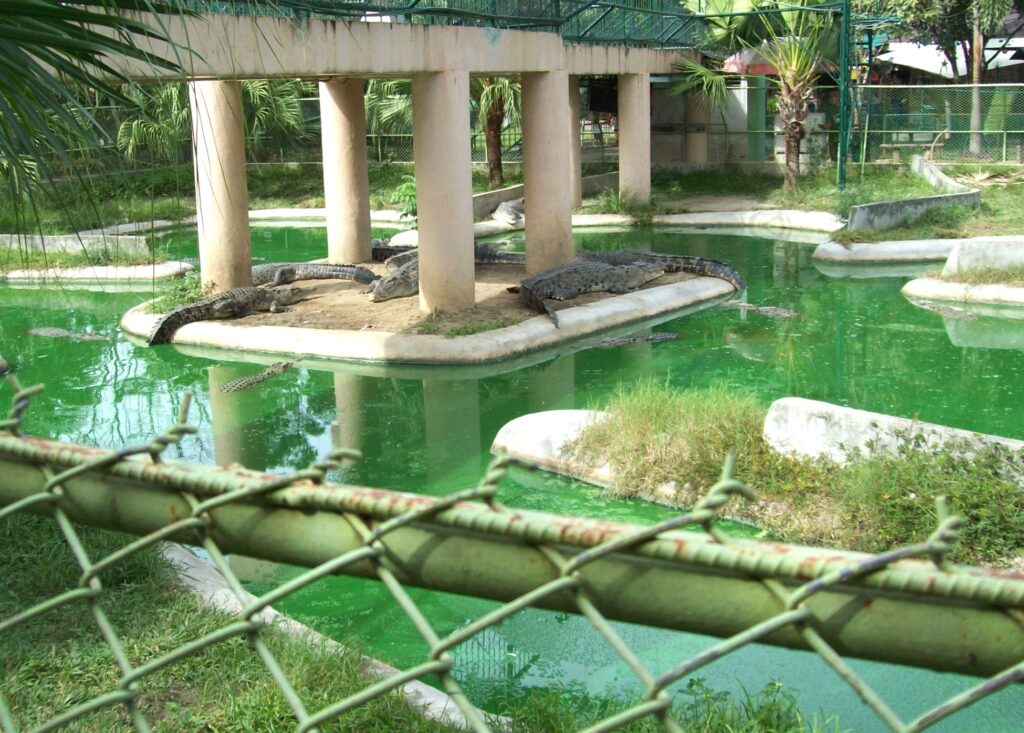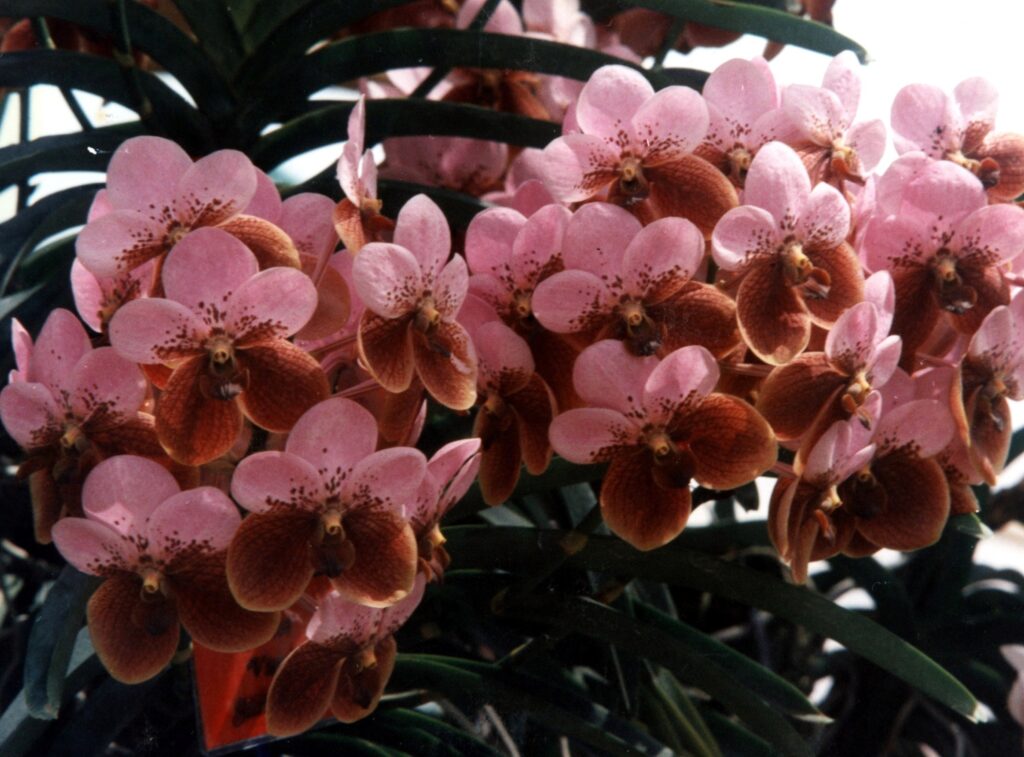SAVING BIODIVERSITY FROM DOOM
Text and Photos by Henrylito D. Tacio
The Philippines, with more than 7,000 islands, is considered by respected scientists as one of the countries with the highest degree of biological diversity (biodiversity for short) in the world.
The Philippines is home to about 170,000 faunal species, most of which are insects and are mostly unidentified, according to the Department of Environment and Natural Resources (DENR). Twelve thousand plant species and 960 animal species are found in Philippine forests. Of the identified animal species, over 500 are birds and 167 are mammals.
Out of the 500 known coral species worldwide, about 488 coral species in 78 genera are found in the Philippines. There are only about 50 species of seagrasses in the world. A total of 16 species can be found in the country, and this is the second highest diversity that exists in one country; only Western Australia has more with 17 species. At least 2,000 fish species are found in the Philippines.
About 98 of mammal species are endemic to the Philippines. In the last seven years, experts have discovered 12 mammal species in the country seen nowhere else on the planet. “The number compares with other countries like Brazil,” says Philippine fauna specialist Dr. Lawrence Heaney of the Field Museum of Natural History in Chicago. “But compare their sizes. For such a small area, the Philippine rockets ahead.”
For the uninformed, Brazil has a total land area of 3,286,488 square kilometers while the Philippines has a total land area of 115,800 square kilometers. The neighbor Indonesia, another biodiversity-rich country, has a total land area of 741,101 square kilometers.

While its biodiversity is among the highest, the Philippines’ ecosystems are among the most threatened. In fact, most scientists included the entire Philippine archipelago as among the five biogeographical areas in the world considered the “hottest of the hot spots,” a hot spot being an area whose high biodiversity is gravely threatened.
Dr. Lee Talbot, director of Southeast Asia Project on Wildlife Conservation of Nature and Natural Resources, agreed: “A few decades ago, the wildlife of the Philippines was notable for its abundance; now, it is notable for its variety; if present trend of destruction continues, Philippine wildlife will be notable for its absence.”
A species is considered extinct when it is no longer found in the past 50 years. Endangered species are those that have been reduced in number to a critical level or whose habitats have been damaged or altered or reduced.
Rare species have small world populations. Usually, they are restricted to very few habitats. At present, rare species are not considered endangered but at risk. Threatened, on the other hand, is a general term used to describe the animal or plant species which could be in the status of “endangered” and “insufficiently known.”
The majestic Philippine eagle (known in the science world as “Pithecophaga jefferyi”), for instance, has been included in the list of the world’s 100 most endangered birds in a study published in Current Biology.
The Philippine eagle was ranked No. 8 in the list. “This is truly a dubious distinction for our national bird,” commented Dennis Joseph Ilustre Salvador, the executive director of the Davao-based Philippine Eagle Foundation.
On why the Philippine eagle is nearing extinction, the study surmised: “One of the big hurdles in conserving the Philippine eagle is that each breeding pair requires a range up to 40 square kilometers to adequately feed and rear their offspring, which makes it particularly vulnerable to deforestation.”
The Philippine eagle is also in the list compiled by the Convention for International Trade of Endangered Species (CITES), of which the country is a signatory. The other Philippine birds included in the list are: falcons, peregrine falcon, Palawan peacock pheasant, spotted greenshank, pygmy curlew, Nicobar pigeon, bleeding heart pigeon, all species of parrots, Koch’s pitta, all species of owls, giant scops owl, rufous hornbill, and eastern sarus crane.
All the marine turtles found in the Philippines – the Green Sea, Hawksbill, Loggerhead, Olive Ridley, and Leatherback – are considered threatened reptiles, along with Philippine and estuarine crocodiles, lizards and pythons.
Seven mammals in the Philippines are considered by CITES as “on the brink of extinction.” These are dugong, tamaraw, pangolin, Philippine tarsier, Philippine palm civet, Calamanian deer and fruit bats.
Most of these biodiversity are living in protected areas. This must be the reason why Environment Secretary Roy A. Cimatu called for stronger measures to conserve and preserve these areas whom he described as “the last bastion of endemic but threatened wildlife and habitats.”
Speaking during the celebration of the International Day of Biodiversity last May 22, which was spearheaded by the Biodiversity Management Bureau, said: “We are facing a natural scarcity due to numerous factors, foremost is the degradation of our terrestrial and marine ecosystems.”
This has been highlighted in its first ever Philippine Environmental Quality Report (PEQR). It said: “Today’s threats to species and ecosystems are the greatest in recorded history. Virtually all of them are caused by human mismanagement of biological resources, often stimulated by misguided economic policies and faulty institutions that enable the exploiters to avoid the full costs of their exploitation.”
Harvard biologist Edward O. Wilson cites deforestation as one of the primary causes of the extinction of species. The unprecedented clearing of forests condemns at least one species of bird, mammal, or plant to extinction daily, he said.
Let’s take the case of the Philippines. In the 1950s, three-fourths of the archipelago was covered with forest. By 1972, this figure had shrunk to half, and by 1988, only one quarter of the Philippines was wooded and only a tiny fraction of this was virgin forest.
“Over the years, the Philippine forests have been subjected to unabated destruction,” the DENR report admits. The principal causes have been illegal logging, shifting cultivation, forest fires, natural calamities, as well as, conversion to agricultural lands, human settlements, and other land uses brought about by urbanization and increasing human population pressure.

From 1989 to 1995, the annual average rate of deforestation has been estimated at 130,000 hectares. In contrast, reforestation efforts by government and private institutions have hardly kept pace with deforestation.
The destruction of other ecosystems has likewise resulted in the depletion of biological resources in the Philippines. Take the case of wetlands, the resting and nourishing areas of migratory birds fleeing the chill of winter seasons. Among the birds which migrate to the Philippines are waterfowls, raptors and passerines.
Philippines wetlands, which are in the state of dying, also serve as havens for many endangered species. The Agusan Marsh in Mindanao, for instance, is home to the largest remaining population of the Philippine crocodile (Crocodylus mindorensis) and the estuarine or saltwater crocodile (C. porosus).
Before it’s too late, these natural resources should be saved from extinction. “The worst thing that can happen – will happen – is not energy depletion, economic collapse, limited nuclear war, or conquest by a totalitarian government,” Wilson writes in Harvard Magazine. “As terrible as these catastrophes would be for us, they can be repaired within a few generations. The once process… that will take millions of years to correct is the loss of genetic and species diversity by the destruction of natural habitats. This is the folly our descendants are least likely to forgive us.”
According to John C. Ryan, of the Washington-based Worldwatch Institute, “protection of biodiversity should be one of the top priorities of any meaningful strategy to safeguard the world’s biological heritage.”
During the time of the presidency of Corazon C. Aquino, Republic Act 7586 was signed into law which provided for “the establishment and management of a National Integrated Protected Areas Systems (NIPAS).”
“Protected areas” are “portions of land and water set aside by (law for) reason of their unique physical and biological significance.” Also known as natural habitat, they are meant to be “managed to enhance biological diversity and protected against destructive human exploitation.”
Pursuant to the goals and objectives of the NIPAS and the Convention on Biological Diversity, the National Biodiversity Strategy and Action Plan was formulated. This was preceded by the formulation of the Philippine Strategy for Biological Diversity Conservation in 1993.
“Our centerpiece response to protect and conserve our biodiversity resources is the establishment of an integrated protected areas system,” Cimatu said.
Currently, the Philippines has 240 protected areas but only 13 are supported by legislation; the rest were established by virtue of presidential proclamations, presidential decrees and executive orders.
“Do heed the warnings that are starkly evident – it will be costly and disastrous for all of us,” Cimatu urged, citing the case of Boracay, which had to be closed down in order for the government to address the environmental problems plaguing the world-famous resort island.
Meanwhile, the PEQR admits that the way biological ecosystems are managed can enhance or reduce biodiversity. “Effective systems of management can ensure that biological resources not only survive, but increase while they are being used, thus providing the foundation for sustainable development,” it says.

